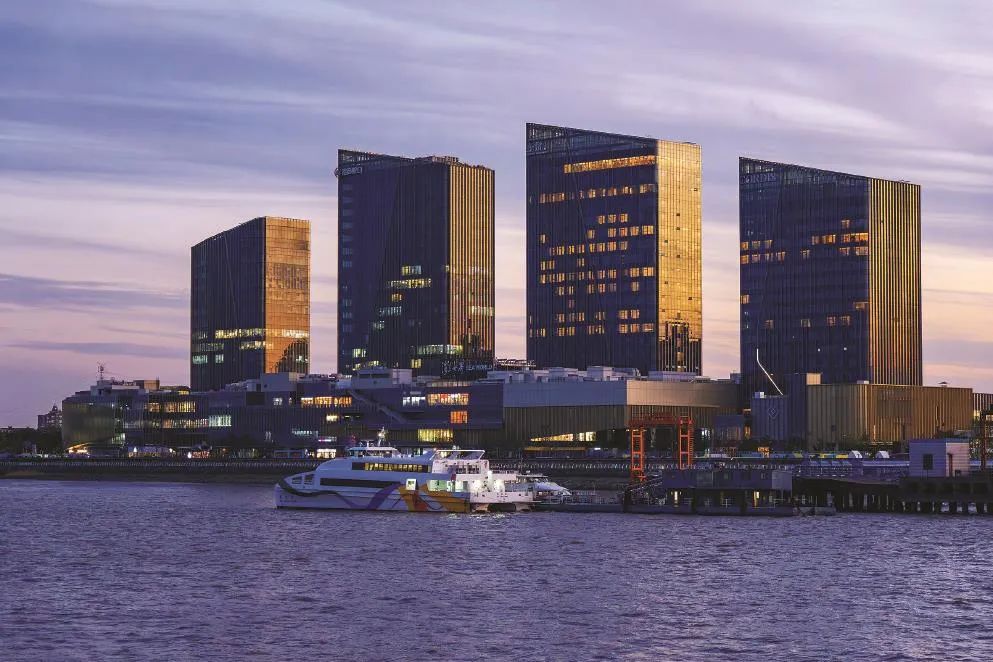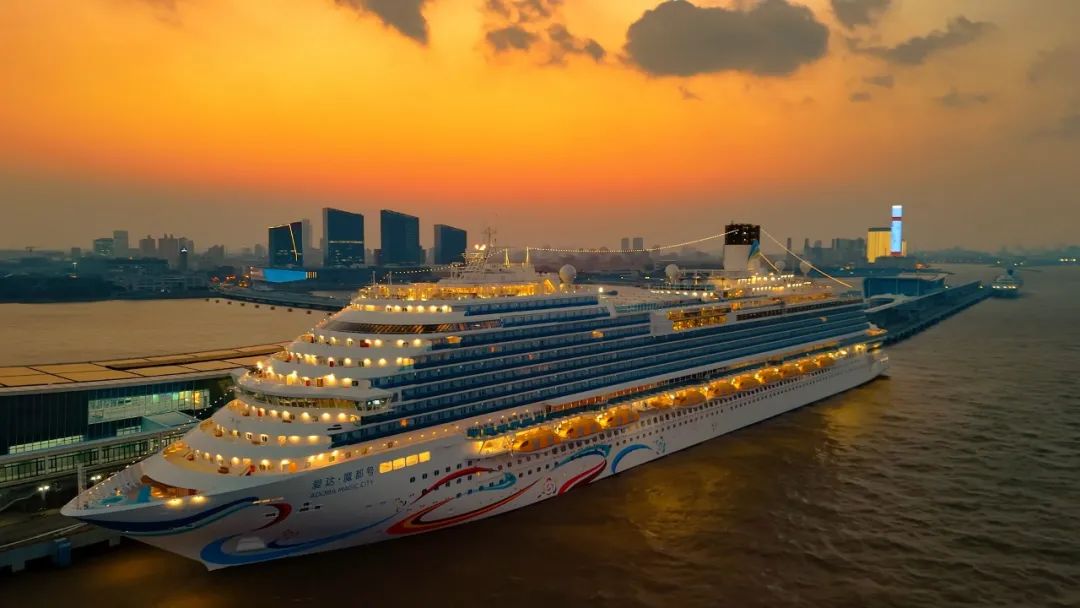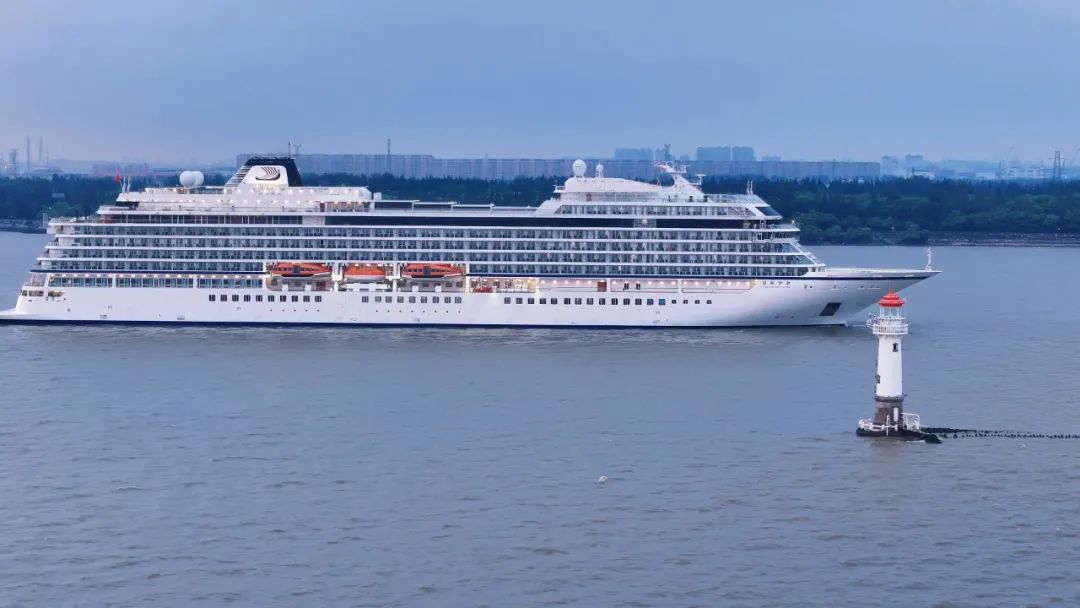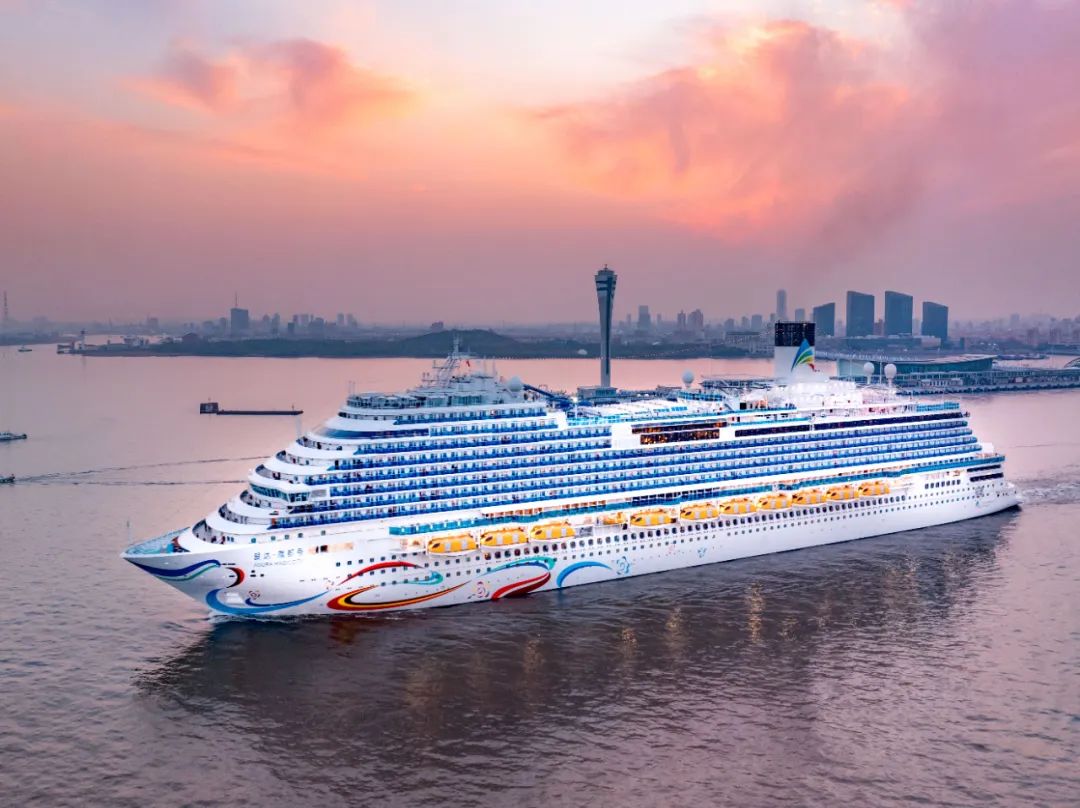Shanghai Wusongkou International Cruise Terminal to Develop Tourism on the Riverside
After a year of operation of Adora Magic City, the first cruise made in China, many wonder about the performance of the cruise market in China.
During the online shopping festival that culminates on November 11, also known as Singles Day, cruise tourism services are put into the “shopping cart” by many consumers. Major based-on-Shanghai international cruises, such as MSC Glory and Royal Caribbean’s Spectrum of the Seas, are selling tickets at a discount. The cruise travel promotion on the online platform aims to boost consumer demand in the autumn and winter, two low seasons for cruise tourism, to stabilize medium and long-term consumption.

Shanghai World, the first cruise-themed tourism complex at the riverside opens. [Photo by respondent]
It isn’t the first time an international cruise giant has embraced the online platform. As early as 10 years ago, to strengthen the control and bargaining power of cruise ticket sales channels, Ctrip bypassed travel agencies and distributors and set up its subsidiary to share the cake with international cruise giants. In the era of “winning by quantity”, this model has fostered win-win cooperation. As the market is changing, at the Wusongkou Forum 2024, Liu Fan, CEO of Ctrip’s cruise business, revealed that cruise tourists who are willing to pay for riverside services account for nearly 40%. This means that cooperation between online platforms and international cruise giants is no longer limited to “selling a ticket together”. Efforts in the collection of user feedback, demand research, data analysis and product development are needed and satisfying the diversified needs of cruise tourists becomes the key to improving the re-purchase rate. As the largest cruise home port in Asia, Shanghai Wusongkou International Cruise Terminal is constantly promoting tourism on the riverside. “Shanghai World”, the first cruise-themed tourism complex at the riverside opens; the 6km recreational cycling path along the Yangtze River coastline opens to the public. Relevant officials expect that by 2026, the terminal will be able to receive more than 1,000 international cruise ships per year and receive more than 8 million passengers per year, thus promoting economic development through cruise tourism. “Leaving the group” for individualized experience

Liu Zinan, senior vice president of Royal Caribbean Group and chairman of the Asia region, made a field trip and found the rate of tourists leaving the group was as high as 70% on a “Shanghai – Okinawa” cruise. However, Okinawa is not a convenient and suitable destination for independent cruise travel. Even so, many tourists won’t choose group travel, which provides free services but promotes unnecessary consumption for the tourists, and they prefer to rent a car for an individualized experience. In response to the new needs of consumers, cruise companies and online travel platforms are actively developing individualized travel schemes. It requires a solution for individualized experience with the port city playing the key role. This year, demand for such customized small groups has been growing rapidly. Zhao Wei, CEO of Japan Oriental Co., Ltd., introduced that the practice of its cruise agency shows that the current proportion of conventional tours, boutique tours and individualized tours is about 4:3:3. Zhao Wei predicted that the market share of individualized tours was expected to expand with the launch of individualized tour scheme by Adora Magic City and the cancellation of leaving group fees. Will cruise companies get a smaller market share in the future? Zhao Wei doesn’t see it that way. On the contrary, cruise consumption will continue to expand, benefiting both cruise companies and local agencies. Taking the Osaka Riverside Tourism Project jointly launched by Japan Oriental International Co., Ltd. and a cruise company as an example, after full user research, they jointly fostered the unique consumption habits of “watching the night view in Osaka while eating teppanyaki”. Initially, they set the price at around 2,500 yuan and Zhao Wei was quite perturbed about this try. He didn’t know whether such a high price per person exceeded market expectations. Surprisingly, the product became a hit. Good market feedback proves that as long as the company has an advantage in terms of service, customers will pay the price. Comfortable transfer More and more cruise companies turn to the operation of boutique small group tours, but, how to optimize terminal transportation? Liu Zinan explained that in the past, tourists usually took buses to their destinations during regular tours. However, with the more personalized boutique small group tours, the bus is no longer adapted to the needs. If tourists choose taxis to travel after getting off the ship, it will inevitably cause temporary congestion, which will affect the tour experience on the riverside. A staff member of the Jeju Tourism Organization in South Korea shared the case of Jeju Port at the forum. It has enough buses and taxis in the port and many parking lots, which can accommodate more than 200 cars at the same time. Since this year, a car-hailing app for overseas tourists has been launched. Users only need to enter a phone number or an E-mail to become a member and bind their credit cards to pay automatically. Diverse transportation methods are also a part of the travel experience. For example, Royal Caribbean Group operates a cultural tour in Kumamoto, where visitors can choose small ships for a close-up view of the coastline and an encounter with dolphins. Some cruise companies choose to cooperate with local railway companies in Japan to launch the sightseeing train project, which not only shortens the bus journey but also allows tourists to taste Japanese food and enjoy the scenery outside in the comfort of the train. Other tourists hover in helicopters over the crater, looking down on the spectacular landscape formed by lava eruptions hundreds of thousands of years ago. In Liu Zinan’s view, promoting diverse transportation methods is a new test for cruise companies and local agencies in terms of management. From the capacity of attractions to the time arrangement, relevant enterprises should pay more attention to details, to ensure that the services satisfy the needs of tourists, and to improve the transfer experience on the board and at the terminal. It also requires a more inclusive cruise policy for the Asia-Pacific cruise market. Liu Zinan took the cruise sightseeing landing permit as an example, saying that in some ports in Japan and South Korea, tourists can go ashore without a visa after the travel agency submits the list of tourists and the relevant tourism authority approves it. However, for tourists who don’t choose the group tour, it is hard to get a permit. Recently, the relevant departments have been mulling over this problem. “If tourists can go ashore without a visa, nearly two hours are saved for sightseeing, which will better improve the experience of cruise travel”, an official said.


宝山汇APP

上海宝山微信

上海宝山微博